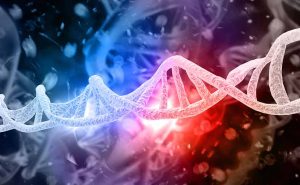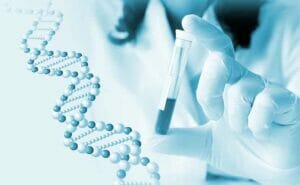Klinefelter's syndrome is a chromosomal abnormality found in boys. It is believed to be caused by an excess of the X chromosome, a sex chromosome. In this article, a physician explains the symptoms, causes, and treatment of Klinefelter syndrome, as well as NIPT (new prenatal diagnosis).
Summary of this article
Klinefelter’s syndrome is caused by an abnormality in the number of sex chromosomes found in boys. It occurs in approximately 1 out of 500 births of boys and is the most frequent sex chromosome abnormality. There are no noticeable symptoms during infancy and childhood. However, when the child reaches puberty, immaturity of secondary sexual characteristics (masculinity) is observed.
What is Klinefelter Syndrome?
Klinefelter syndrome is caused by an abnormal number of sex chromosomes found in boys. Usually, a boy’s sex chromosome is XY, a combination of X and Y chromosomes.
However, boys with Klinefelter’s syndrome are born with an extra X chromosome (XXY) on their sex chromosome, and symptoms appear mainly during puberty.
Klinefelter syndrome occurs in approximately 1 out of 500 births of boys and is the most frequent sex chromosome abnormality.
On the other hand, since Klinefelter syndrome is not an external and health problem in most cases, many men are never diagnosed and lead normal social lives.
Because of these factors, it has been reported that approximately 60-70% of men with Klinefelter’s syndrome are undiagnosed, and it is often discovered only during the course of male infertility testing.
Klinefelter syndrome is a disease caused by sex chromosome abnormalities. As such, NIPT (New Non-invasive Prenatal Testing) makes it possible to test for this condition while the baby is still in the mother’s womb.
One of the Designated Intractable Diseases
While Klinefelter’s syndrome is considered a relatively frequent sex chromosome abnormality, about 60-70% of men with the syndrome are undiagnosed.
However, it is characterized by azoospermia and oligozoospermia, in which the testes are small and no sperm are seen in the semen, and is one of the officially ‘designated intractable diseases’ that cause various complications in a few cases, although there are some individual differences.
Causes of Klinefelter Syndrome
Normal boys have an XY sex chromosome, but boys with Klinefelter syndrome have an XXY sex chromosome, which is caused by having an extra X chromosome.
In modern medicine, the causes of chromosome abnormalities are not fully known. It could be said that they are caused by extremely complex mechanisms, such as the function of heredity and the process of cell division.
Sex Chromosomes and Fertilization Mechanisms
Chromosomes are folded structures of DNA that carry genetic information and are found in the nucleus of every cell in the body. Chromosomes are in pairs, consisting of 22 autosomes and two sex chromosomes (XY and XX).
Sex chromosomes determine the sex of an organism and are a combination of ‘XY’ for males and ‘XX’ for females. Most cells have 23 paired chromosomes, with the only exception being the reproductive cells.
Reproductive cells include sperm in males and eggs in females. The sperm have 22 autosomes and Y or X chromosomes, which are not in pairs.
The egg, on the other hand, has 22 unpaired autosomes and X chromosomes.
When the sperm and egg combine through fertilization, the fertilized egg has 22 pairs of autosomes and one pair of sex chromosomes. If the sex chromosome combination is ‘XY’, the fetus will be a boy; if it is ‘XX’, it will be a girl. The fertilized egg then grows inside the mother’s womb while repeating cell division.
Klinefelter Syndrome is caused by an Abnormality
in the number of X chromosomes
As mentioned earlier, a healthy baby boy will have an XY sex chromosome. On the other hand, Klinefelter syndrome is characterized by having an excess number of X chromosomes, such as ‘XXY’ and ‘XXXY’ sex chromosomes. The higher the number of extra X chromosomes, the more severe the disability tends to be.
Most of the extra X chromosomes that result in Klinefelter syndrome are found to be from the mother. This is believed to be caused by poor quality eggs due primarily to aging and the inability to separate the paired chromosomes (XX). These facts suggest that pregnancies at an old age and births are more likely to cause abnormalities in the number of sex chromosomes.
Klinefelter syndrome is also often caused by an excess of X chromosomes derived from the father due to insufficient separation of the XY chromosomes in the father’s sperm. Moreover, it is also reported that a defect in cell division of a fertilized egg can also result in an excess of X chromosomes.
Klinefelter and Turner Syndrome
While Klinefelter syndrome is a sex chromosome abnormality found in boys, Turner syndrome is a sex chromosome abnormality found in girls.
While healthy women have two X chromosomes (XX), women with Turner syndrome have a partial or total deletion of one of the two X chromosomes.
Turner syndrome is characterized by short stature, lack of secondary sexual characteristics, and sagging skin from the neck to the shoulders. Also, Turner syndrome is associated with few intellectual problems.
Symptoms of Klinefelter Syndrome
Most cases of Klinefelter syndrome do not manifest prominently during infancy and childhood. Therefore, it is rare for parents to be aware of their child’s disability unless the condition is diagnosed in advance, such as through prenatal testing.
However, when these children reach puberty, many of them seek medical attention because of the underdevelopment of secondary sexual characteristics, which is masculinity.
The main features and symptoms of Klinefelter syndrome include the following:
Physical Features of Klinefelter Syndrome
Boys with Klinefelter syndrome tend to be taller and have longer limbs.
On the other hand, the testes, the male reproductive organs, tend to be smaller in size. The testes are the organs that produce the male hormone testosterone. In Klinefelter syndrome, the production of testosterone is decreased, resulting in a weakening of the onset of masculinity after puberty.
Klinefelter’s syndrome, in which the testes tend to be small due to low testosterone production and the amount of beard and pubic hair tends to be small, breast enlargement or gynecomastia, just like that of women’s breasts, is observed.
In addition, the growth of the larynx, which becomes prominent on the surface of the body due to male hormones, is also less noticeable, and the distinctive voice change that is typical of adolescent boys is not likely to occur.
Men with Klinefelter syndrome often have male infertility due to azoospermia or oligozoospermia. On the other hand, there are cases in which men with Klinefelter syndrome also develop testicular development. In these cases, the testes produce sperm and are therefore fertile.
Even if Klinefelter syndrome results in impaired reproductive function, it does not affect sexual intercourse. Even if no sperm are produced at all, erection and ejaculatory function are maintained.
Klinefelter syndrome is often associated with low production of the male hormone testosterone, a sparsely bearded face, a slender build, and gynecomastia.
However, the percentage of men with ‘gender dysphoria’ whose romantic partner is of the same sex is said to be not different from that of men who are negative for Klinefelter syndrome. As a result, many men are said to find their feminine physical characteristics stressful.
Main Physical Features of Klinefelter Syndrome
- Small Testes
- Thin body hair, such as beard and pubic hair
- Poor Voice Change (or no voice change)
- Low Bone Density and Poor Muscle Growth (Slender Body Type)
- Gynecomastia
- Taller Stature
- Long Arms and Legs
Psychological Symptoms of Klinefelter Syndrome
Boys with Klinefelter syndrome tend to have normal or slightly lower intelligence. They may not have adequate language skills and may not be proficient in speaking or reading. As a result, they often have learning disabilities in school and other communities. They also tend to be less confident and active than other boys, and are more passive and shy.

Complications likely to occur with Klinefelter Syndrome
The life expectancy of men with Klinefelter syndrome is almost the same as that of healthy men.
On the other hand, those with Klinefelter syndrome are more prone to the following diseases than other men;
Malignant Tumors
Malignant tumors, commonly referred to as ‘cancer’, are diseases in which abnormal cell growth occurs due to some unknown cause. Some malignant tumors grow so fast that they spread to other organs and are often life-threatening.
Klinefelter syndrome may increase the frequency of some malignant tumors. Specific malignancies that are considered high-risk include the following:
Breast Cancer
Although breast cancer is often perceived as the cancer that only happens in women, it is also found in men, albeit less frequently. The frequency of breast cancer in men with Klinefelter syndrome peaks at age 70 and is lower than the risk of breast cancer in women.
Non-Hodgkin Lymphoma
It is a malignant tumor in which lymphocytes in the blood become cancer cells and multiply without limit. Since lymphocytes are responsible for removing foreign substances that invade the body, it is possible that cancerous transformation leads to a decline in immune function.
The cause of Klinefelter syndrome causing malignancy is not fully determined, but it is believed to be due to an imbalance in the body’s hormonal environment caused by an excess of X chromosomes. 。
Osteoporosis
It is a condition in which bone density (bone mass) becomes low and, in simpler terms, the interior of the bone becomes spongy. Osteoporosis causes bones to become brittle, making them more susceptible to fracture.
Bone density is correlated with the female hormone estrogen, which is common in postmenopausal women of both genders. In women, estrogen is produced by the ovaries; in men, it is produced from the male hormone testosterone.
Because testosterone is low in Klinefelter syndrome, the amount of estrogen produced is also low. Because of these factors, men with Klinefelter syndrome are more prone to osteoporosis and should be careful.
Autoimmune Diseases
It is a disease in which the immune system, which protects the body from foreign substances, overreacts and attacks its own cells. Autoimmune diseases manifest a variety of symptoms depending on the site of attack.
Diabetes
Diabetes is a condition in which blood sugar, the sugar in the blood, is elevated. It has been found that there is a relationship between testosterone production and blood glucose levels. When testosterone levels decrease due to Klinefelter syndrome, blood sugar levels are more likely to be worsened because obesity is more likely to occur due to metabolic abnormalities.
Tests for Klinefelter Syndrome
In most cases, Klinefelter’s syndrome is a disease with minimal external apperance and health problems. Therefore, it is estimated that less than about 10% of all cases of Klinefelter’s syndrome are diagnosed before puberty. However, the symptoms become more prominent after puberty, triggering the patient to undergo testing.
After a child is mature, Klinefelter syndrome can be diagnosed by analyzing DNA through blood tests. The risk of chromosomal abnormalities causing Klinefelter syndrome can also be examined before birth with NIPT (New Non-invasive Prenatal Testing).
Treatment and Support for Klinefelter Syndrome
There is no fundamental treatment for boys born with Klinefelter syndrome. Meanwhile, treatments are available to alleviate the respective symptoms. Also, although Klinefelter syndrome is considered one of the ‘designated incurable diseases’, there is generally no disability certificate issued for it.
Hormone Replacement Therapy
Hormone replacement therapy is used when Klinefelter syndrome results in low testosterone in the blood. Hormone replacement therapy consists of intramuscular injections of testosterone every 2 to 4 weeks.
It is generally recommended that hormone replacement therapy be started at puberty for Klinefelter syndrome and continued for life. Hormone therapy at puberty has the benefit of helping the onset of secondary sexual characteristics, resulting in a more masculine body with greater muscle mass. It also has the effect of increasing bone density (bone mass), which peaks in the 20s.
Continued treatment after puberty can prevent metabolic syndromes and reduce the risk of developing diabetes.
Note that hormone replacement therapy cannot increase sperm count. Therefore, please note that it is not effective in treating male-caused infertility (male infertility).
Hormone replacement therapy rarely has major side effects, but the following symptoms may occur:
- Acne
- Swelling
- Increased red blood cell count
- Prostate Disease
Therefore, when undergoing hormone replacement therapy for Klinefelter syndrome, the health of the heart, kidneys, and prostate should be regularly monitored.

Male Infertility Treatment
Klinefelter syndrome is a condition of male infertility, but it is possible to have a child through fertility treatment.
If sperm can be seen in the semen (Oligospermia)
Intra-Cytoplasmic Sperm Injection (ICSI) can be used to conceive a child. Specifically, the sperm are injected directly into the egg under a microscope to perform artificial insemination.
If no sperm can be seen in the semen (Azoospermia)
It is called Intracytoplasmic Sperm Retrieval and involves collecting sperm through a puncture or small incision in the testicle. If sperm are found, they are used for ICSI. It is reported that about 40% of patients with Klinefelter syndrome have sperm found by the Intracytoplasmic Sperm Retrieval Method.
Rehabilitation
Rehabilitation is a therapeutic education primarily for children with developmental disabilities. Specialized training is provided to help the child with daily living difficulties. Rehabilitation education for boys with Klinefelter’ syndrome mainly involves training in how to communicate using language.
Genetic Counseling
Although it is not a direct treatment, genetic counseling is important in Klinefelter syndrome. Diseases that involve genes, such as chromosomal abnormalities, and their treatment are very sensitive issues. Genetic counseling is provided by a doctor or other specialist to support the family and the patient in making decisions.
Telling a boy with Klinefelter syndrome that he has a congenital disability can be a challenge for the family. However, just as there is a right to know if one’s child has a disability, there is also a right ‘not to know’.
Whether or not a child learns about Klinefelter syndrome depends on his or her situation and level of understanding. Even if you do inform them about the syndrome, you do not have to tell them everything at once.
Klinefelter Syndrome and NIPT (New Non-invasive Prenatal Testing)
Klinefelter’s syndrome is a relatively common sex chromosome abnormality. It is also estimated that abnormalities in the number of sex chromosomes account for 5% of all congenital abnormalities.
In general, NIPT (New Non-invasive Prenatal Testing) is mainly a screening test for Down syndrome (Trisomy 21), Edwards syndrome (Trisomy 18), and Patau syndrome (Trisomy 13) only. Therefore, the risk of sex chromosome abnormalities such as Klinefelter syndrome cannot be examined.
Hiro Clinic NIPT can test for Down syndrome (Trisomy 21), Edwards syndrome (Trisomy 18), and Patau syndrome (Trisomy 13), as well as all chromosome abnormalities including sex chromosomes.
Patients often ask us questions about various genetic conditions other than Down syndrome, questions such as, “Is there a chance that developmental disabilities or mental illnesses are inherited?” etc.
Also, many of the diseases caused by chromosomal abnormalities require long-term nursing care. At Hiro Clinic NIPT, our doctors and staff are highly experienced in NIPT (New Non-invasive Prenatal Testing) and will explain about chromosomal abnormalities and heredity to you in a simple and easy-to-understand way. Please feel free to contact us for a consultation.
【References】
- Hyogo Medical University – クラインフェルター症候群をご理解いただくために
- JCR Pharma – クラインフェルター症候群と腫瘍/小児から成人まで
- Japan Endocrine Society – ターナー症候群
Klinefelter's syndrome is a chromosomal abnormality found in boys. It is believed to be caused by an excess of the X chromosome, a sex chromosome. In this article, a physician explains the symptoms, causes, and treatment of Klinefelter syndrome, as well as NIPT (new prenatal diagnosis).
Article Editorial Supervisor

Dr Hiroshi Oka
NIPT specialist clinic, MD
Graduated from Keio University, School of Medicine
 中文
中文























